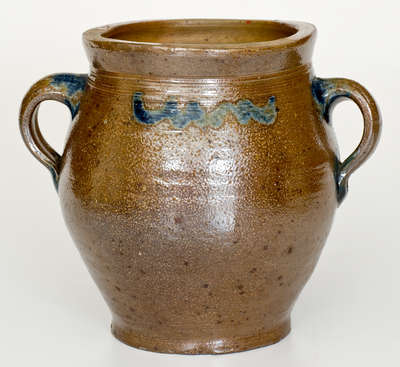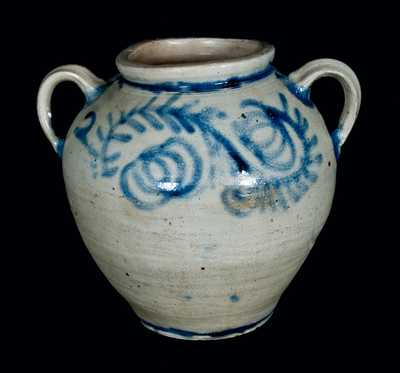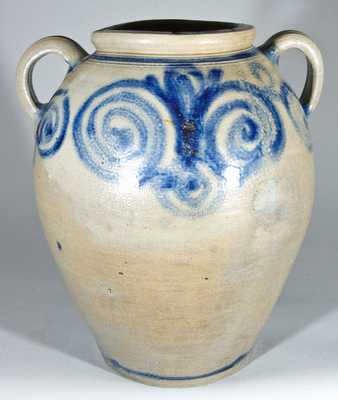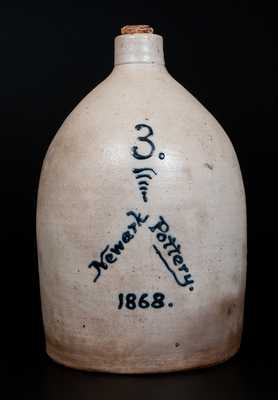Exceptional Three-Gallon Vertical-Handled Stoneware Jar with Bold Cobalt Watchspring Decoration, probably Cheesequake, NJ origin, circa 1775, ovoid jar with footed base, heavily-tooled shoulder, and ribbed vertical handles, decorated on the front and reverse with a large slip-trailed watchspring motif accented with tassel-shaped strokes. This outstanding jar features a classic early form and is considered the most brilliantly-colored example of watchspring-decorated stoneware we have offered. The evenly-fired, light-gray clay forms a striking contrast to the crisp, dark cobalt decoration. Most notable, however, about this jar is its decoration's extreme similarity to that seen on fragments excavated at Capt. James Morgan's Cheesequake pottery site by New Jersey stoneware researcher, Robert J. Sim around the early 1940's. One such fragment that seems related to this jar is a jug top inscribed "Liberty / 1776." While watchspring-decorated examples are typically attributed to Morgan's Cheesequake shop, out of all of those we have sold, this example probably lines up best with the American Revolutionary period wasters Sim found, making it potentially a significant discovery in the study of 18th century American ceramics. A 3 1/2" x 1 3/8" in-the-firing loss to edge of base, connected to a long shallow, in-the-firing loss to base. (The above damage was likely caused when the base adhered to a piece of kiln furniture or other jar during the firing.) A 1 1/4" glazed-over chip to base and other smaller chips to base and underside, most or all of which appears to be in-the-firing. A few typical in-the-firing chips/contact marks to surface. A 2 1/4" crack on underside, continuing 7 1/2" up body of jar. Other tight lines to surface, not visible on interior. Rim is somewhat out-of-round. H 14".













